
Vichy is a city in the Allier department, Auvergne-Rhône-Alpes, central France, in the historic province of Bourbonnais.

Spa is a city and municipality of Wallonia in the province of Liège, Belgium, whose name became an eponym for mineral baths with supposed curative properties. It is in a valley in the Ardennes mountains 35 km (22 mi) south-east of Liège and 45 km (28 mi) south-west of Aachen. In 2006, Spa had a population of 10,543 and an area of 39.85 km2 (15.39 sq mi), giving a population density of 265/km2 (690/sq mi).
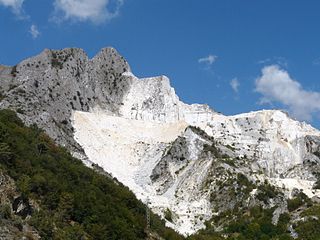
A quarry is a type of open-pit mine in which dimension stone, rock, construction aggregate, riprap, sand, gravel, or slate is excavated from the ground. The operation of quarries is regulated in some jurisdictions to manage their safety risks and reduce their environmental impact.
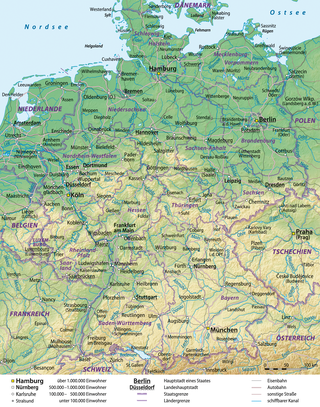
Germany is the eighth-most-visited country in the world, with a total of 407.26 million overnights during 2012. This number includes 68.83 million nights by foreign visitors, the majority of foreign tourists in 2009 coming from the Netherlands, the United Kingdom, and Switzerland. Additionally, more than 30% of Germans spend their holiday in their own country. According to Travel and Tourism Competitiveness Reports, Germany is ranked 3 out of 136 countries in the 2017 report, and is rated as one of the safest travel destinations worldwide.

Bathing is the act of washing the body, usually with water, or the immersion of the body in water. It may be practiced for personal hygiene, religious ritual or therapeutic purposes. By analogy, especially as a recreational activity, the term is also applied to sun bathing and sea bathing.

Hydrotherapy, formerly called hydropathy and also called water cure, is a branch of alternative medicine, occupational therapy, and physiotherapy, that involves the use of water for pain relief and treatment. The term encompasses a broad range of approaches and therapeutic methods that take advantage of the physical properties of water, such as temperature and pressure, to stimulate blood circulation, and treat the symptoms of certain diseases.

Sebastian Kneipp was a German Catholic priest and one of the forefathers of the naturopathic medicine movement. He is most commonly associated with the "Kneipp Cure" form of hydrotherapy, the application of water through various methods, temperatures and pressures, which he claimed to have therapeutic or healing effects, thus building several hospitals in Bad Wörishofen.

A spa is a location where mineral-rich spring water is used to give medicinal baths. Spa towns or spa resorts typically offer various health treatments, which are also known as balneotherapy. The belief in the curative powers of mineral waters goes back to prehistoric times. Such practices have been popular worldwide, but are especially widespread in Europe and Japan. Day spas and medspas are also quite popular, and offer various personal care treatments.

A hot tub is a large tub full of water used for hydrotherapy, relaxation or pleasure. Some have powerful jets for massage purposes. Hot tubs are sometimes also known as "spas" or by the trade name Jacuzzi.

Benedict Lust was a German-born American who was one of the founders of naturopathic medicine in the first decades of the twentieth century.
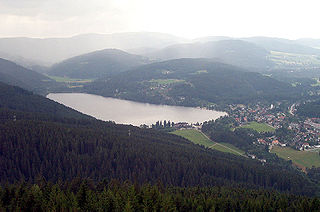
Titisee-Neustadt is a municipality in the district of Breisgau-Hochschwarzwald in Baden-Württemberg in southern Germany. It is made up of the six communities of Neustadt, Langenordnach, Rudenberg, Titisee, Schwärzenbach and Waldau.

The Titisee is a lake in the southern Black Forest in Baden-Württemberg. It covers an area of 1.3 km2 and is an average of 20 m (66 ft) deep. It owes its formation to the Feldberg glacier, the moraines of which were formed in the Pleistocene epoch and nowadays form the shores of the lake. The lake's outflow, at 840 m (2,760 ft) above sea level, is the River Gutach, which merges with the Haslach stream below Kappel to form the Wutach. The waters of the Titisee thus drain eventually into the Upper Rhine between Tiengen and Waldshut. On the north shore lies the spa town of the same name, today a part of the municipality of Titisee-Neustadt.
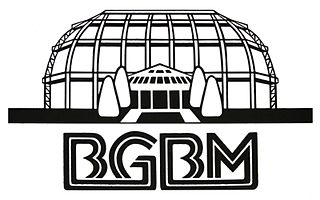
The Berlin Botanic Garden and Botanical Museum is a botanical garden in the Lichterfelde locality of the borough of Steglitz-Zehlendorf, Berlin, Germany. Constructed between 1897 and 1910 under the guidance of architect Adolf Engler, it has an area of 43 hectares [ha] and around 22,000 different plant species. The garden is part of the Free University of Berlin.

Bad Berneck is a spa town in the district of Bayreuth, in Bavaria, Germany. It is situated on the White Main river, in the Fichtelgebirge mountains, 13 km northeast of Bayreuth. Its official title is Bad Berneck im Fichtelgebirge. It lies in the northern part of the Bavarian province of Upper Franconia. Since 1857 it has been a spa, initially based on its climate and whey products. In 1930 it became a Kneipp spa and, in 1950, a Kneipp health spa.
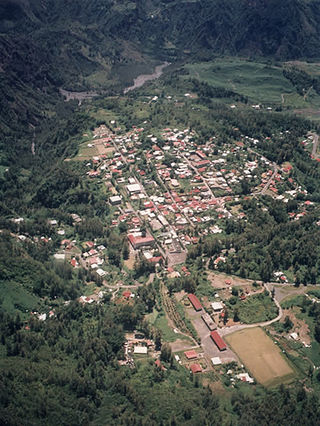
Hell-Bourg is a small village in the Salazie commune of the French overseas department of Réunion. It is the main community in the island's Cirque de Salazie, and is named for the respected former admiral and island governor Anne Chrétien Louis de Hell. Previously the village had been named Bémaho. It is located 1344 m (4412 ft) above sea level.
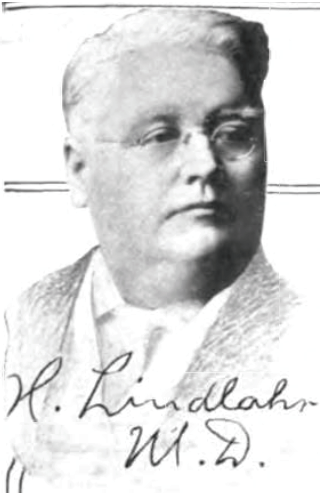
Henry Lindlahr was the author of one of the cornerstone texts of American naturopathic medicine, Nature Cure, which includes topics about disease suppression versus elimination, hydrotherapy, and the importance of fresh air and sun bathing.
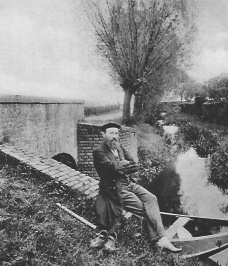
The Protestant pastor Leopold Erdmann Emanuel Felke was a naturopath who developed the eponymous Felke cure, and who was active in Repelen near Moers from 1896 to 1914 and in Bad Sobernheim from 1915 to 1925. He also practiced iris diagnosis (iridology) and is considered the co-father of combination homeopathic remedies.
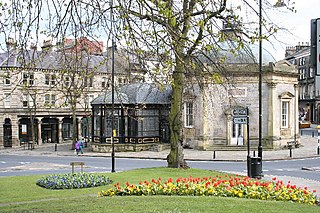
The Royal Pump Room is a Grade II* listed building in Harrogate, North Yorkshire, England. Today it houses the town's museum – operated by Harrogate Borough Council. It was formerly a spa water pump house. It is located in Crown Place in the western part of Harrogate town centre, opposite the town's Valley Gardens park. It is bounded by two streets, Crescent Road and Royal Parade. Today, the Pump Room consists of both the original 1842 stone rotunda and a glazed annexe which was opened in 1913. The Pump Room offered guests of the town an all weather facility where they could drink sulphur water which was pumped on site from a natural spring known as the Old Sulphur Well. The building also had a social element to it as it provided guests with a place to meet friends and get to know others.
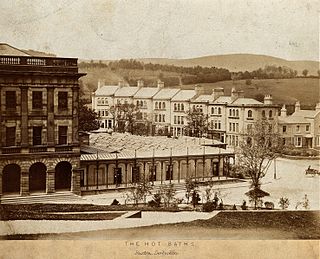
The Buxton Baths using natural thermal spring water are in Buxton, Derbyshire, England. The baths date back to Roman times and were the basis for developing Buxton as a Georgian and Victorian spa town. The present buildings of the Thermal Baths and the Natural Mineral Baths were opened in the 1850s. They are positioned either side of the Buxton Crescent at the foot of The Slopes in the town's Central Conservation Area. They are both Grade II listed buildings designed by Henry Currey, architect for the 7th Duke of Devonshire.
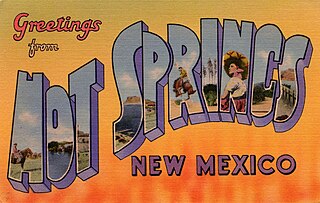
Truth or Consequences Hot Springs is a thermal spring system located in the Hot Springs Artesian Basin area of Truth or Consequences, New Mexico in Sierra County.






























